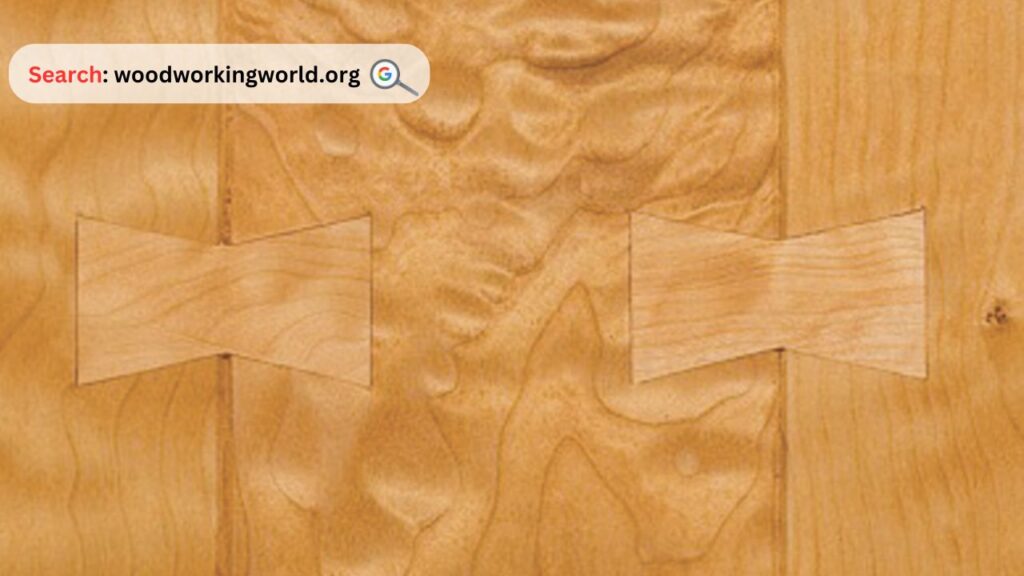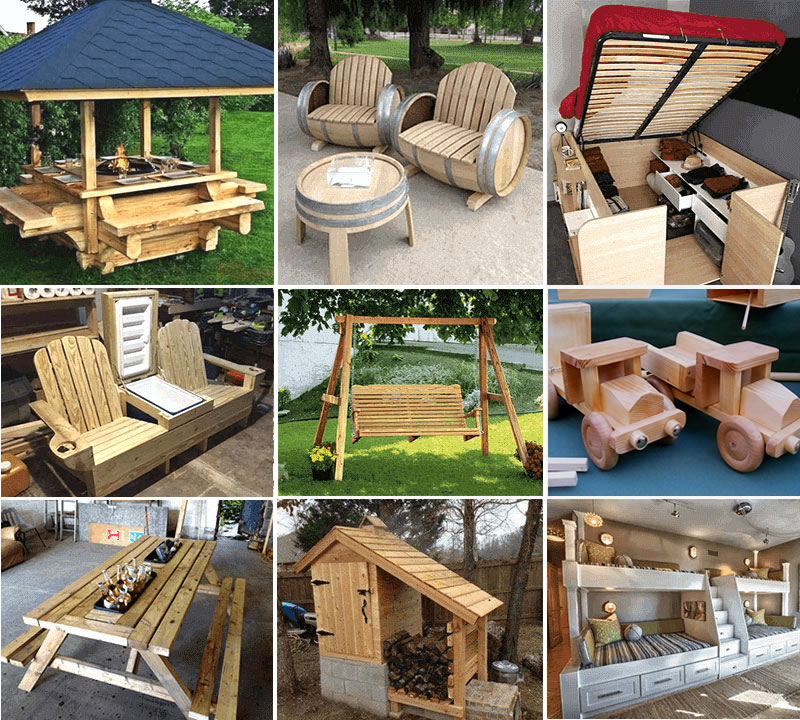Decorative and functional woodworking butterfly joints explained
Butterfly joints, also known as bowtie or dovetail keys, are a time-honored woodworking technique used for both decorative and functional purposes.
These joints serve as a stunning design feature while also reinforcing and preventing cracks in wood. Originating from traditional joinery techniques, butterfly joints have evolved to be used in both fine furniture making and rustic live-edge slab tables.
This article explores everything you need to know about butterfly joints, including their history, how they function, step-by-step instructions to create them, and their advantages over other joinery methods. Whether you’re a beginner or an experienced woodworker, understanding the role of butterfly joints can enhance the durability and aesthetic appeal of your woodworking projects.

👉 Click here to unlock 16,000+ DIY woodworking plans now
What is a Butterfly Joint?
A butterfly joint is a wooden inlay, shaped like a bowtie, used to stabilize and strengthen cracks or splits in wood. The joint is inserted into a mortise (a cavity cut into the wood) to hold two separate pieces of wood together or prevent an existing crack from widening. Beyond its structural benefits, butterfly joints are often used as a decorative element, adding a handcrafted look to woodworking projects.
👉 Build 16,000+ Projects with Step-by-Step Plans—No Big Workshop or Costly Tools Needed! Start Now!
Where are Butterfly Joints Used?
Butterfly joints are commonly used in:
- Live-edge slab furniture
- Rustic wood tables
- Cabinetry
- Wooden flooring repairs
- Artistic wooden inlays
- Preventing further splitting in aged or reclaimed wood
Step-by-Step Guide to Making a Butterfly Joint
Creating a butterfly joint requires precision and attention to detail. Follow these steps to make your own:
Step 1: Gather Your Tools and Materials
To make a butterfly joint, you will need:
- A piece of wood for the butterfly key (preferably a contrasting wood species)
- A chisel set
- A router or mallet
- A coping saw or band saw
- Wood glue
- A marking gauge or pencil
- Clamps
- Sandpaper
Step 2: Design and Cut the Butterfly Key
- Draw the butterfly shape on your chosen wood piece. The traditional bowtie shape is wider at the ends and narrower in the middle.
- Use a coping saw or band saw to cut out the shape carefully.
- Sand the edges to ensure a precise fit.
Step 3: Mark and Cut the Mortise
- Place the butterfly key over the area where you want to reinforce the wood.
- Trace around the key with a pencil or marking knife.
- Use a router or chisel to remove the traced area carefully. Ensure that the depth of the mortise matches the thickness of the butterfly key.
Step 4: Fit and Secure the Joint
- Check the fit of the butterfly key in the mortise. It should be snug but not overly tight.
- Apply wood glue to the mortise and insert the butterfly key.
- Clamp the area and allow the glue to dry for a few hours.
Step 5: Sand and Finish the Joint
- Once the glue has dried, use sandpaper to level the joint with the wood surface.
- Apply a wood finish or sealant to enhance the contrast and protect the surface.
Expert tips on Woodworking 🌿📦 Watch now!

Butterfly Joints vs. Other Joinery Techniques
Below is a comparison of butterfly joints with other popular woodworking joints:
| Feature | Butterfly Joint | Dovetail Joint | Mortise and Tenon | Biscuit Joint |
|---|---|---|---|---|
| Strength | High (ideal for reinforcing cracks) | Very strong (used in drawer construction) | Extremely strong (used in furniture making) | Moderate (for alignment and reinforcement) |
| Difficulty Level | Moderate | Difficult | Advanced | Easy |
| Decorative Appeal | High | Medium | Low | Low |
| Common Uses | Live-edge furniture, rustic woodworking | Drawers, cabinets | Tables, chairs, doors | Panel glue-ups |
Advantages of Using Butterfly Joints
- Strengthens Cracks: Prevents existing wood cracks from widening.
- Aesthetic Appeal: Adds a beautiful handcrafted look.
- Minimal Hardware Needed: Only requires glue and precise cutting.
- Versatile: Can be used in various woodworking projects, from rustic to modern designs.
- Customizable: Can be made from different types of wood to create contrast.
Famous Quote on Woodworking
“Woodworking requires patience, precision, and creativity—qualities that are all embodied in the beauty of a butterfly joint.” – Anonymous
FAQs About Butterfly Joints
1. Are butterfly joints strong?
Yes, butterfly joints significantly strengthen wood by preventing cracks from expanding. When properly installed, they add durability and stability to a project.
2. What type of wood is best for butterfly keys?
Hardwoods like walnut, maple, and oak are best because they offer excellent durability and contrast well with softer woods.
3. Can butterfly joints be used for modern furniture?
Absolutely! While commonly seen in rustic designs, butterfly joints can be incorporated into modern furniture by using clean lines and minimalist inlays.
4. How deep should a butterfly joint be?
The depth should be approximately 1/3 of the thickness of the wood piece being reinforced.
5. Do I need special tools to make a butterfly joint?
No, but having a chisel set, coping saw, and router will make the process easier and more precise.

Conclusion
Butterfly joints are a fantastic combination of function and design, offering woodworkers an elegant way to reinforce and beautify their projects. Whether you’re repairing a cracked slab or adding a decorative touch to furniture, mastering the butterfly joint can elevate your craftsmanship. By following the step-by-step guide and understanding its applications, you can create durable and visually appealing woodworking pieces with this timeless technique.
👉 Click here to unlock 16,000+ DIY woodworking plans now
